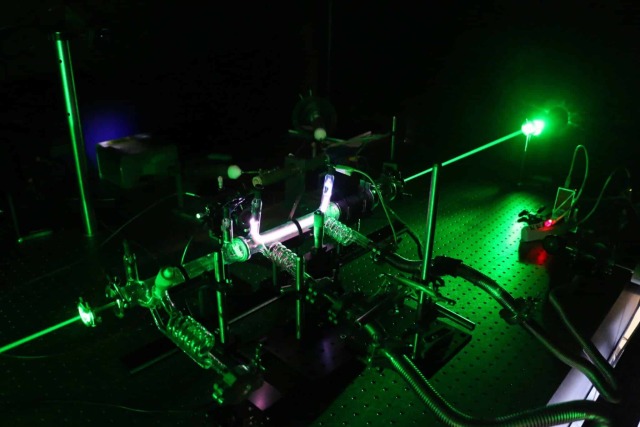An international team of researchers has developed a new way to produce oxygen on the Red Planet using gases from the local atmosphere and cold plasma. The technology can play a crucial role in the development of human life support systems, since it allows you to get a lot of oxygen for breathing, the production of rocket fuel, fertilizers and building materials with minimal equipment weight.
Space flight programs aimed at scientific exploration and possible colonization of the Moon and Mars are constantly expanding and setting more and more ambitious goals. An important landmark was the NASA Artemis III mission, during which people should land on the surface of the Moon in 2024, for the first time in the last 50 years. Among the long—term goals of this mission is a stable human presence on the Earth's satellite (or its orbit) and the use of the acquired skills and knowledge for the next step — sending people to Mars.
The so-called use of resources on site (collection and processing of resources found, for example, on Mars, and their use for human life support) is crucial for the implementation of these plans. After all, it will be much easier, cheaper and safer for space settlements to develop a technology for obtaining the same oxygen from the atmosphere or regolith (soil) The Red planet, than to deliver it from Earth. But oxygen is needed not only for breathing astronauts, but also, for example, as a component of rocket fuel.
An international team of scientists from Portugal, France, the USA and the Netherlands has proposed a new approach to the production of oxygen in the conditions of Mars. Their technology is based on the generation of non-thermal (cold) plasma and the use of conductive membranes to separate the gas mixture. A detailed description of the development, as well as the test results of the first prototypes are presented in an article published in the Journal of Applied Physics.
Cold plasma is a highly reactive gas medium that is usually created and maintained by electrical discharges. Free high—energy electrons and relatively cold non-ionized gas molecules coexist in it - unlike ordinary plasma (which, for example, stars are made of), consisting of electrons and positively and negatively charged ions. This type of plasma is called cold or non-thermal, because it is produced at temperatures close to room temperature, instead of several thousand degrees, typical for conventional (thermal or hot) plasma.
The idea of the authors of the new work is to use these free electrons of cold plasma and without heating to get oxygen from carbon dioxide, which is more than 95 percent in the atmosphere of Mars. Then, using special conductive membranes, filter the oxygen from the resulting gas mixture and apply it to respiration, the production of rocket fuel, fertilizers and building materials.
According to the researchers, the strengths of the developed plasma technology are that it is compact, scalable, reliable, versatile and does not require expensive materials. In addition, unlike other methods of obtaining oxygen, the method is ideally adapted to power from non-permanent energy sources (for example, solar panels) and can work at Martian reduced pressure, since it is ideal for plasma ignition. This distinguishes the new oxygen production technology from solid oxide electrolysis used in the MOXIE device installed on the Perseverance rover and already undergoing testing on Mars.
The scientists did not limit themselves to theoretical research and decided to test the efficiency of the technology during two experimental campaigns in the Laboratory of Plasma Physics of the Polytechnic School (France) and the Dutch Institute of Fundamental Energy Research (the Netherlands).
In the first test, the operation of the experimental setup was evaluated at low temperatures (the average temperature on the surface of Mars is minus 60 degrees Celsius), and in the second — at low Martian pressure (about 100 times less than on Earth).
Experiments have shown that in both cases, the prototype was able to convert up to a third of carbon dioxide into oxygen, and this is considered a very good indicator. In any case, the authors of the work believe that this is only the first step towards the development of technology. Subsequently, by improving the models for describing cold plasma and conductive membranes, as well as improving the device and the working scheme of the prototype, even more impressive results can be achieved.

